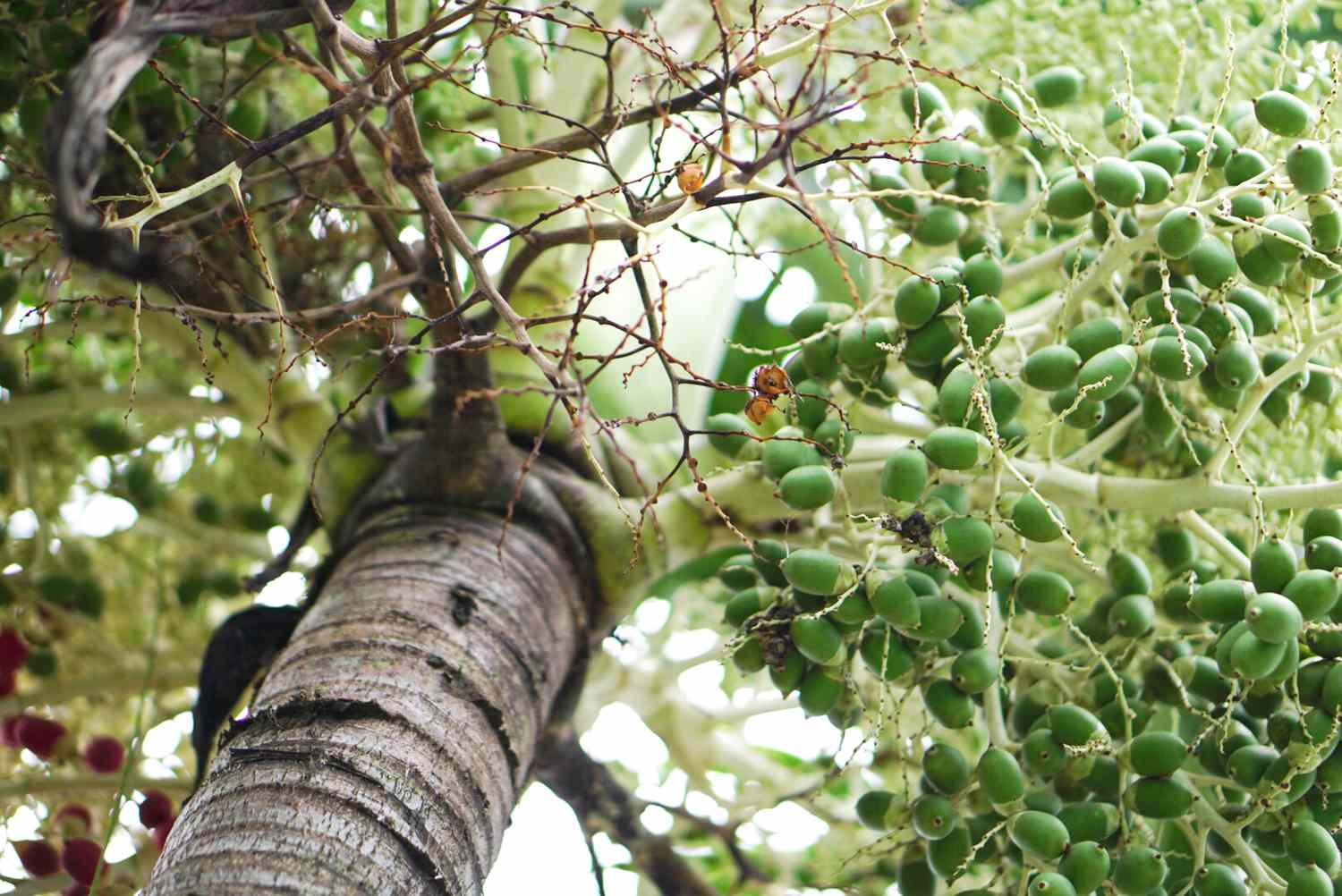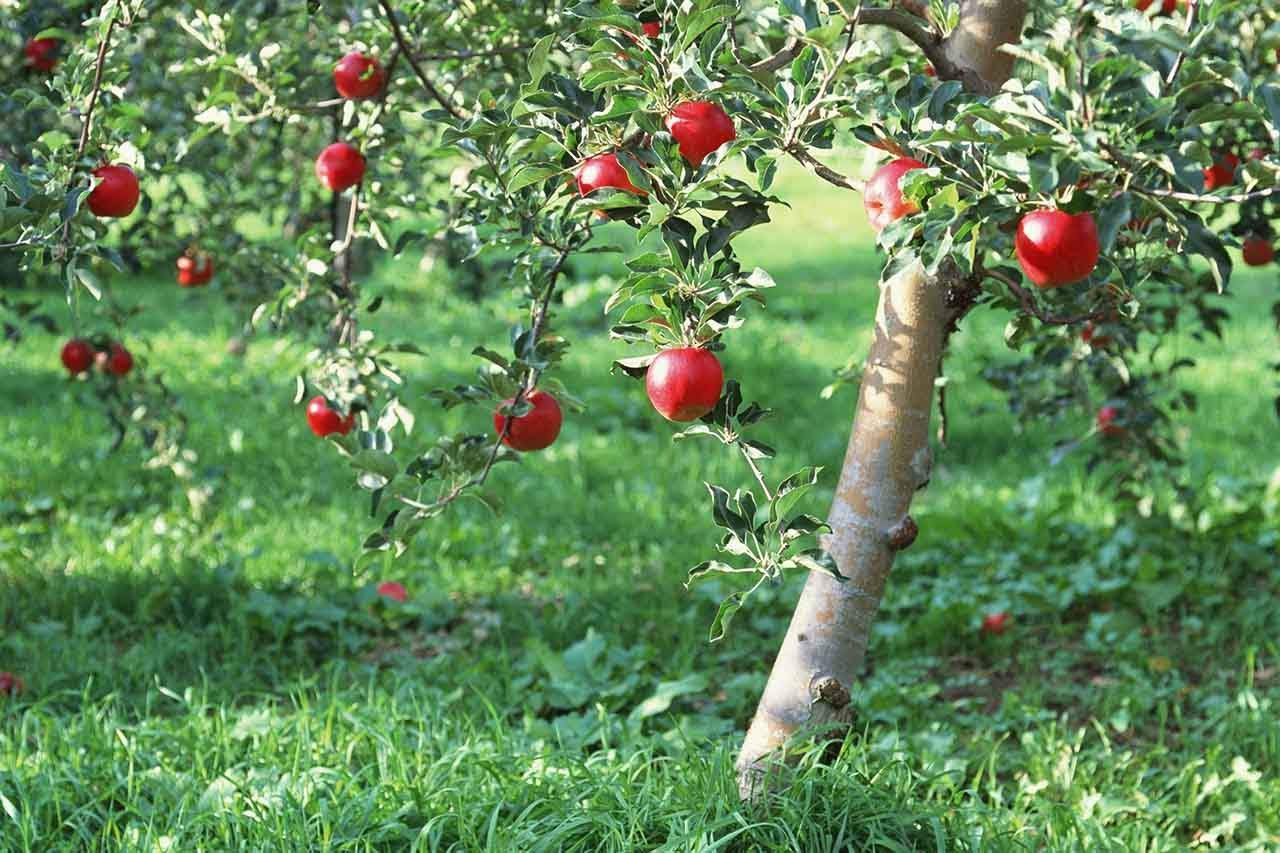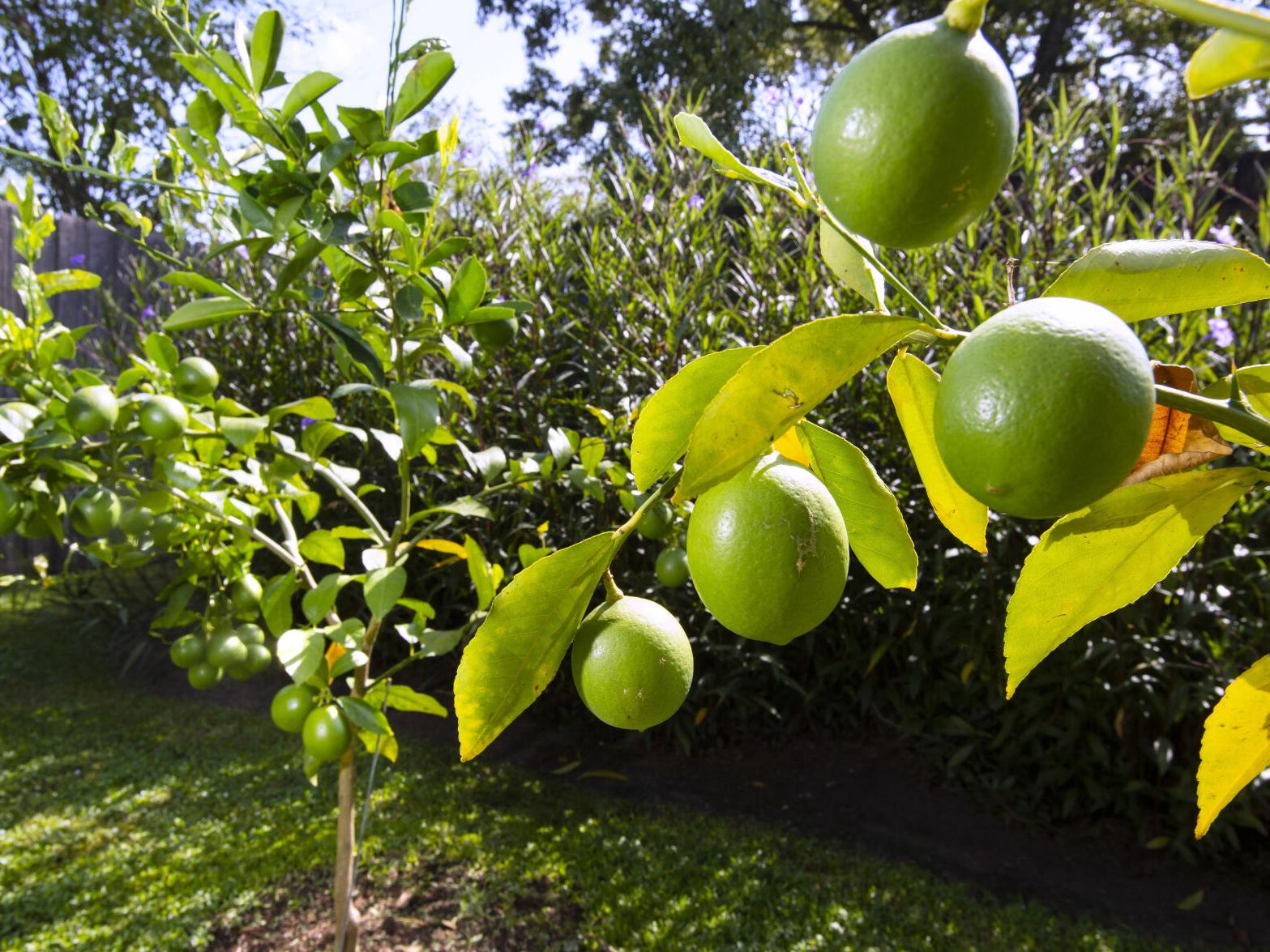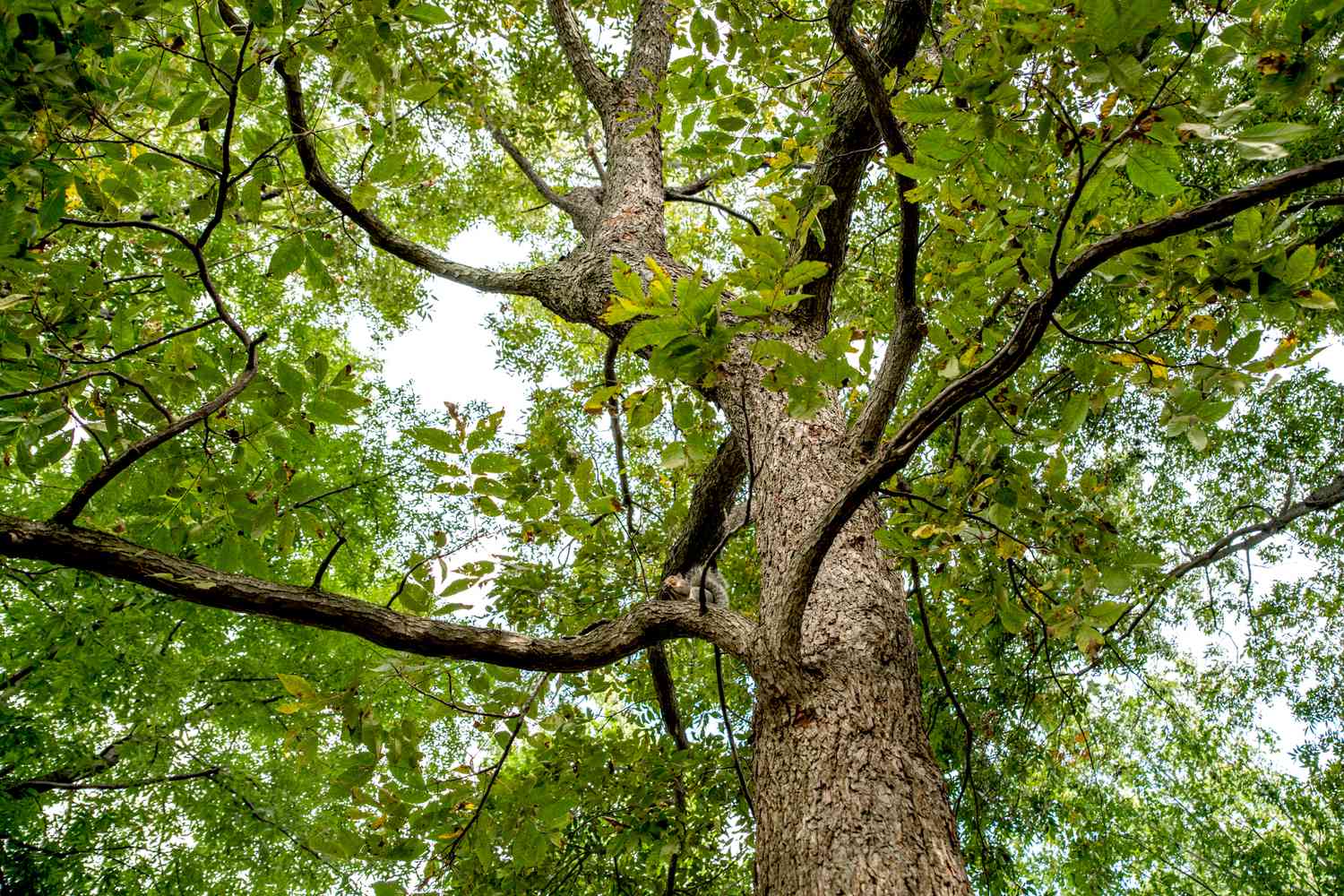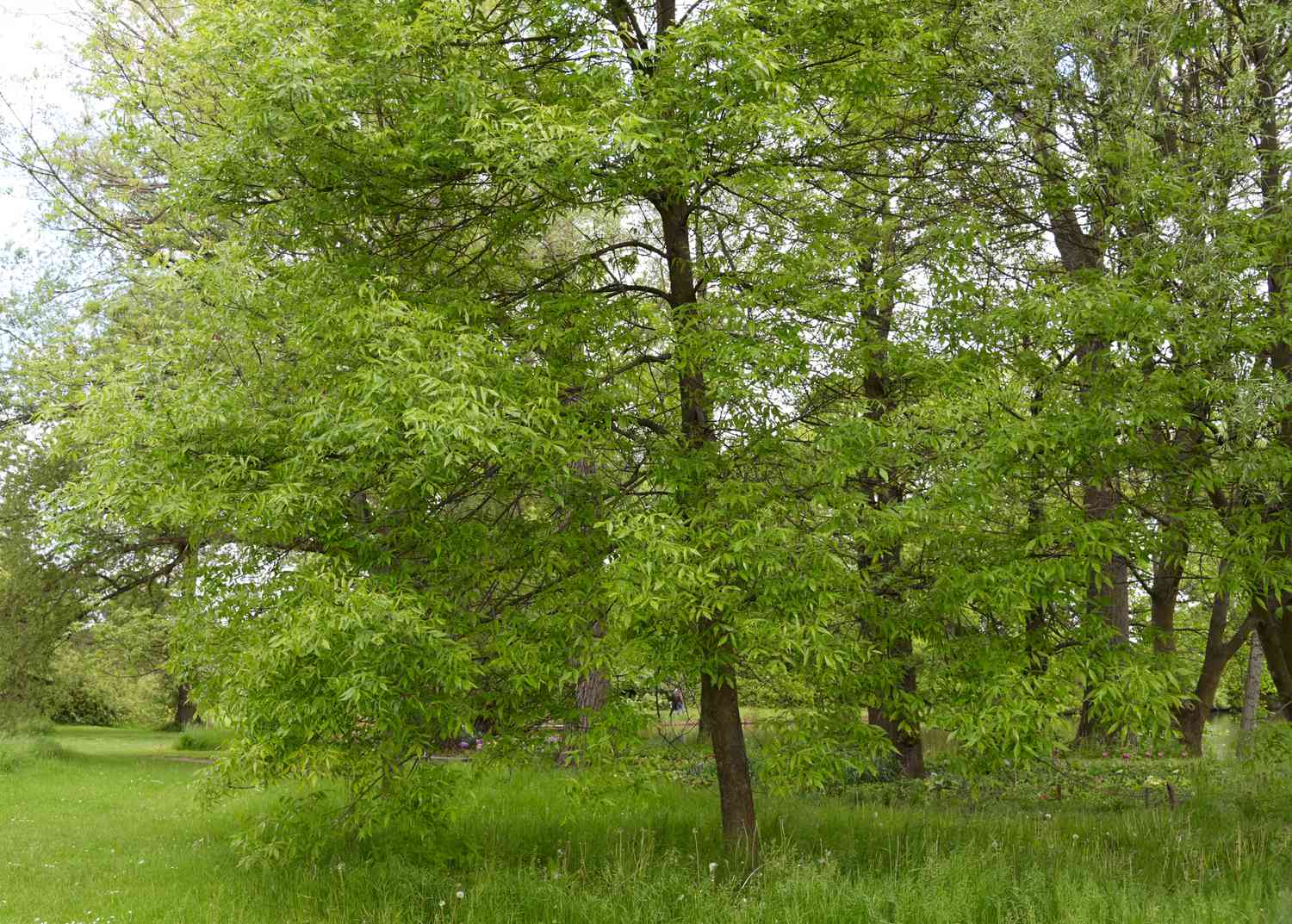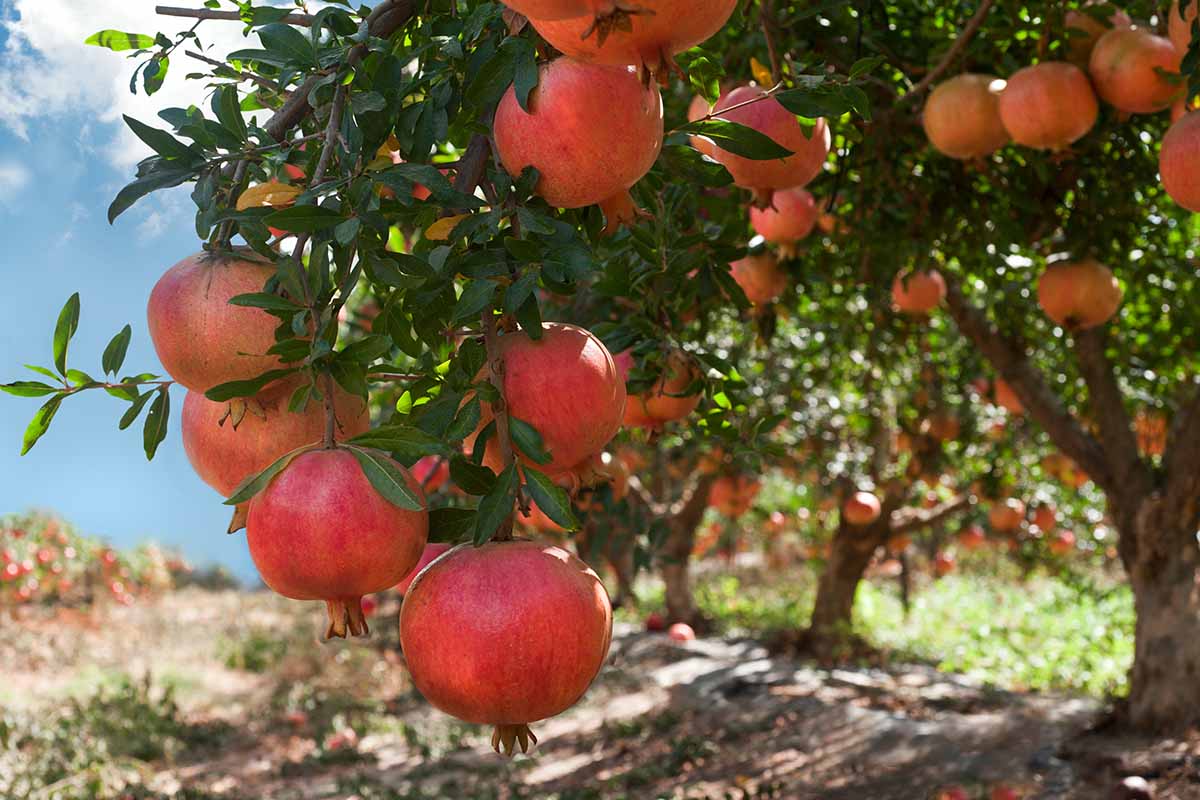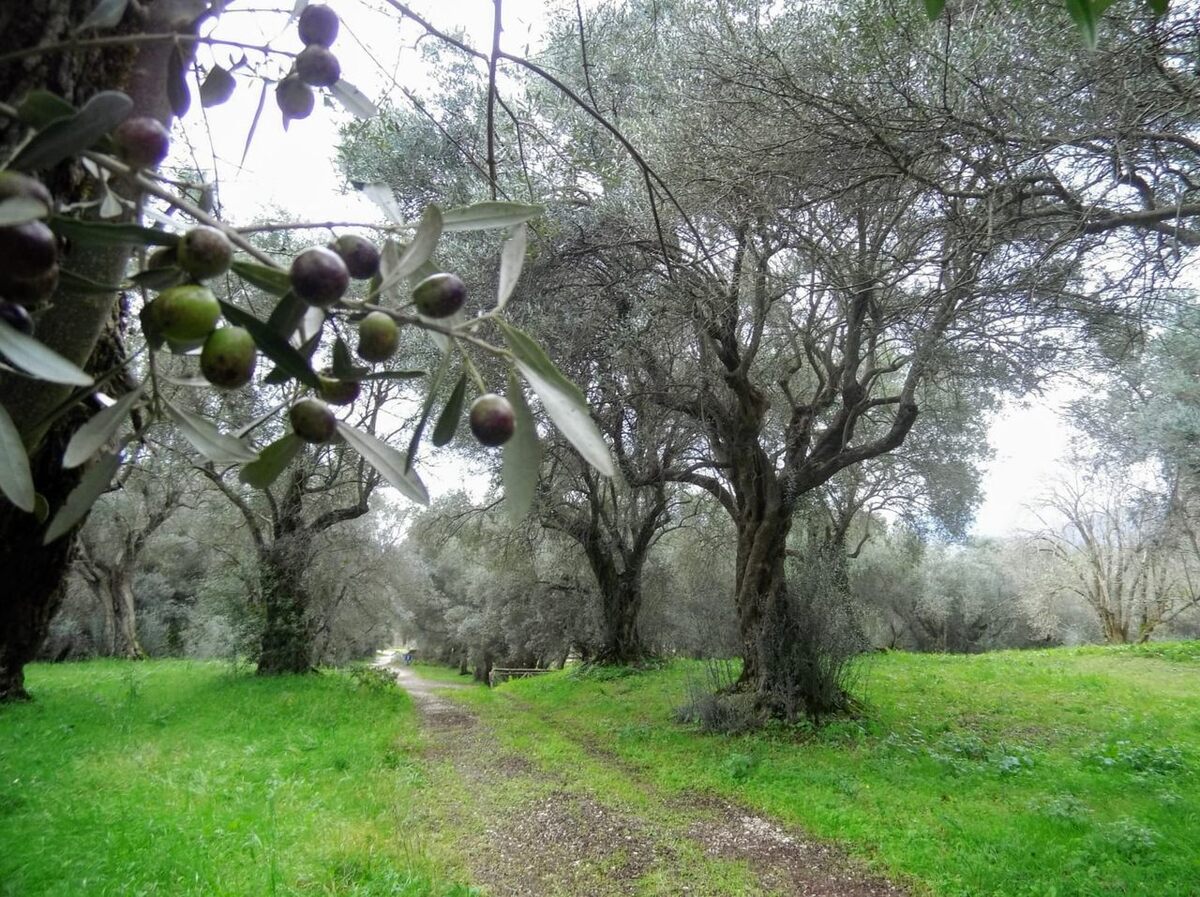Home>Gardening Techniques>Plant Care>How To Grow Mangrove Trees
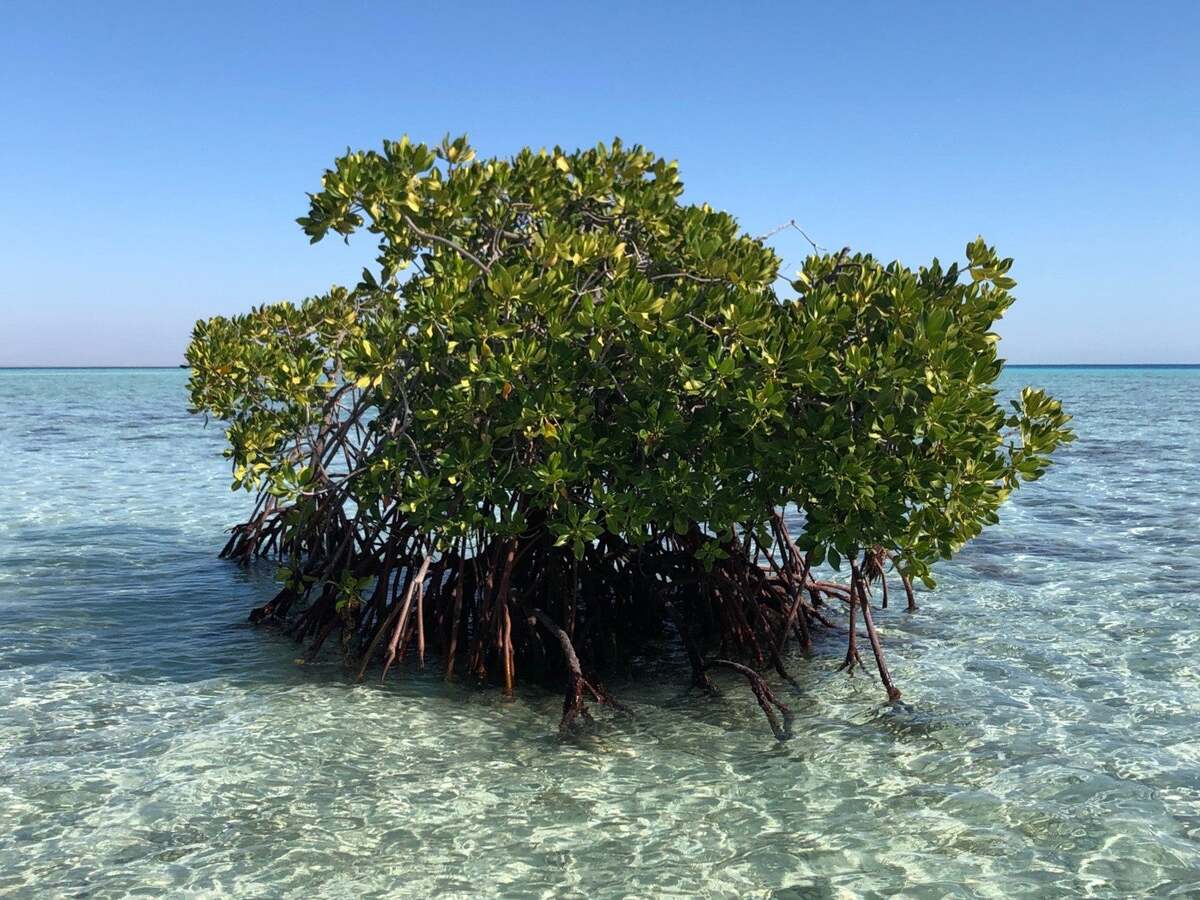

Plant Care
How To Grow Mangrove Trees
Modified: February 6, 2024
Learn the essential plant care tips to successfully grow mangrove trees in your garden. Discover the secrets to creating a suitable environment for these fascinating and unique trees.
(Many of the links in this article redirect to a specific reviewed product. Your purchase of these products through affiliate links helps to generate commission for Chicagolandgardening.com, at no extra cost. Learn more)
Table of Contents
Introduction
Welcome to the world of plant care, where we delve into the fascinating realm of nurturing and tending to various types of plants. In this article, we will be exploring the art of growing mangrove trees, a unique and valuable addition to any garden or landscape. If you’ve ever been captivated by the beauty and ecological significance of mangroves, this guide is for you.
Mangrove trees are a type of saltwater-tolerant plant that thrives in tropical and subtropical coastal areas. They play a crucial role in protecting coastlines from erosion, providing habitats for numerous species, and filtering water pollutants. Additionally, mangroves are widely recognized for their exceptional ability to absorb carbon dioxide, making them an invaluable asset in the fight against climate change.
Even though mangroves primarily grow in coastal regions, it’s now possible to cultivate them in certain inland areas as well. With the right knowledge and techniques, you can create a mini mangrove ecosystem right in your own backyard or garden.
Throughout this article, we will explore the different aspects of growing mangrove trees, from selecting the appropriate species to ensuring the optimal growing conditions. We will also delve into the essential steps for planting and maintaining mangroves to ensure their growth and longevity. Furthermore, we will discuss some common pests and diseases that might affect mangrove trees and how to protect them.
Whether you’re a seasoned plant enthusiast looking to expand your repertoire or a beginner ready to embark on a new plant care journey, this guide will provide you with the necessary information to successfully grow and care for mangrove trees. So, let’s dive in and discover the wonders of cultivating these remarkable and eco-friendly trees.
Benefits of Mangrove Trees
Mangrove trees offer a multitude of benefits, both to the environment and to humans. Let’s explore some of the remarkable advantages they bring:
- Coastline protection: One of the most significant roles of mangrove trees is their ability to protect coastlines from erosion and storm damage. Their extensive root systems absorb and dissipate the force of waves and currents, acting as a natural buffer against coastal erosion.
- Wildlife habitat: Mangroves provide vital habitats for a wide range of wildlife, including birds, fish, crustaceans, and marine mammals. The dense tangle of roots provides shelter and breeding grounds, supporting diverse ecosystems and promoting biodiversity in coastal areas.
- Water filtration: The intricate network of roots found in mangrove forests acts as a natural filter, removing pollutants and sediments from the water. This filtration process helps improve water quality and protects marine life from contaminants.
- Carbon sequestration: Mangrove trees are unparalleled champions in carbon sequestration. They possess a remarkable ability to store vast amounts of carbon dioxide, playing a vital role in mitigating climate change. By preserving and cultivating mangroves, we can actively contribute to reducing greenhouse gas emissions.
- Economic value: Mangrove forests provide numerous economic benefits to local communities. They serve as a source of building materials, fuelwood, and traditional medicines. Additionally, mangrove ecosystems support fisheries and tourism, which contribute to the livelihoods of many individuals.
- Nursery for marine species: The complex root systems and interconnected branches of mangrove trees create a safe and sheltered environment for young fish and other marine species. They serve as nurseries, offering protection and abundant food sources, ensuring the survival and growth of various aquatic organisms.
The benefits of mangrove trees extend far beyond their immediate surroundings. Their ecological significance is intertwined with the well-being of our planet and its inhabitants. By preserving and cultivating mangroves, we can protect coastal areas, support biodiversity, combat climate change, and improve the livelihoods of local communities.
Choosing the Right Mangrove Species
When it comes to growing mangrove trees, selecting the right species is crucial for success. Different species have varying growth requirements and environmental tolerances. Here are a few popular mangrove species and their characteristics to help you make the right choice:
- Red Mangrove (Rhizophora mangle): Known for its distinctive prop roots that provide stability and a unique aesthetic appeal, the red mangrove is a commonly found species in coastal areas. It can tolerate a wide range of salinity levels and is a fast grower. Red mangroves thrive in warm climates and require ample sunlight.
- Black Mangrove (Avicennia germinans): Adapted to brackish water environments, the black mangrove is characterized by its pneumatophores or vertical roots. These roots allow the tree to obtain oxygen in oxygen-deficient soils. Black mangroves can tolerate moderate salinity levels and are well-suited to subtropical and tropical regions.
- White Mangrove (Laguncularia racemosa): White mangroves are well-adapted to areas with lower salinity levels. They have small, rounded leaves and lack prop roots or pneumatophores. White mangroves prefer sheltered environments and can withstand occasional flooding.
- Buttonwood Mangrove (Conocarpus erectus): Despite not being a true mangrove, the buttonwood mangrove is often included in mangrove ecosystems. It has dense foliage and can tolerate a wide range of salinity levels. Buttonwood mangroves are resilient to drought conditions and can be grown in both coastal and inland areas.
When choosing a mangrove species, consider the specific conditions of your location, such as temperature, salinity, and available sunlight. Research the natural habitat of each species to ensure it aligns with your growing environment. Additionally, check with local authorities or botanical gardens to determine if any species are protected or invasive in your area.
It’s important to note that mangroves are regulated in some regions due to their ecological significance. Seek permission and follow any guidelines or permits required before planting mangrove trees.
By carefully selecting the right mangrove species for your area, you can create a thriving and sustainable mangrove habitat that will contribute to the well-being of coastal ecosystems.
Obtaining Mangrove Seeds
Before you can start growing mangrove trees, it’s important to obtain high-quality seeds from a reliable source. Here are some methods you can use to obtain mangrove seeds:
- Local nurseries and botanical gardens: Check with local nurseries or botanical gardens in coastal areas. They may have mangrove seeds or seedlings available for purchase or provide guidance on where to obtain them.
- Online suppliers: Look for reputable online suppliers that specialize in mangrove trees. Ensure that they provide certified seeds that have been ethically sourced and legally obtained.
- Collecting seeds from the wild: If permitted, you may be able to collect mangrove seeds from the wild. However, it’s important to be mindful of the environmental impact and follow any regulations or guidelines set by local authorities. Only collect a small number of seeds, ensuring that you do not disrupt the natural ecosystem.
- Collaborating with local conservation organizations: Connect with local conservation organizations or environmental groups that are involved in mangrove restoration projects. They may have seed banks or be willing to share seeds to support your own mangrove planting efforts.
Once you obtain the mangrove seeds, it’s essential to handle them with care and ensure they are viable for planting. Fresh seeds will have a higher chance of germination, so try to obtain seeds that have recently fallen from trees or seeds that are still enclosed within the fruit.
Before planting the seeds, soak them in water for 24 hours to remove any salt content. This step is crucial as it mimics the natural process of mangrove seed dispersal in saltwater environments.
Remember, mangrove trees are often protected due to their ecological significance, so it’s crucial to adhere to local laws and regulations regarding the collection and transportation of seeds.
By obtaining quality mangrove seeds from reputable sources and following proper protocols, you can ensure the success of your mangrove tree planting expedition and contribute to the preservation and restoration of these valuable coastal ecosystems.
Preparing the Growing Environment
Creating the optimal growing environment is essential for the successful cultivation of mangrove trees. Here are some important steps to prepare the growing environment:
- Choose a suitable location: Mangrove trees prefer areas with full sun exposure, as they require ample sunlight for healthy growth. Select a site that is close to a water source, such as a tidal area or a pond, as mangroves thrive in wet or muddy conditions.
- Check the soil: Mangroves require soil that is rich in organic matter and tolerant of saltwater. Conduct a soil test to determine the composition and pH level of the soil. Ideally, the pH should be between 6.5 and 8.5 for optimal growth.
- Create a brackish water environment: Mangroves thrive in brackish water, which is a mixture of saltwater and freshwater. If you don’t have access to brackish water naturally, you can create a suitable environment by mixing freshwater with sea salt. Aim for a salinity level of around 20 parts per thousand (ppt) for most mangrove species.
- Prepare the soil: Mangroves prefer loose, sandy soil with good drainage. If your soil is compacted or clay-like, mix in some sand or organic matter to improve drainage. Avoid using fertilizers or soil amendments that contain high levels of phosphorus, as it can disrupt nutrient balance and hinder mangrove growth.
- Consider container or hydroponic planting: If you live in an area where the soil conditions are not suitable for mangrove growth, you can opt for container planting or hydroponics. This allows you to control the growing environment more effectively, providing the necessary nutrients and water conditions for the mangroves.
It’s important to note that the preparation of the growing environment may vary depending on the specific mangrove species you are planting. Be sure to research the requirements of the chosen species to ensure you are creating the most suitable environment for their growth.
By carefully preparing the growing environment, you lay the foundation for healthy and robust mangrove trees. Providing the optimal conditions will help ensure successful growth and contribute to the overall health and vitality of your mangrove ecosystem.
Planting Mangrove Seeds
Planting mangrove seeds properly is essential for their successful germination and establishment. Here are the steps to follow when planting mangrove seeds:
- Prepare planting containers: Use small pots, trays, or seedling containers filled with a mixture of sand and soil. Ensure that the containers have drainage holes to prevent waterlogging.
- Sow the seeds: Place the mangrove seeds gently on the surface of the soil mixture, horizontally or vertically. Avoid burying the seeds too deep, as they need access to oxygen for germination.
- Water the seeds: Use brackish water to water the seeds, ensuring that the soil is evenly moist. Avoid overwatering, as excessive moisture can lead to rotting of the seeds.
- Provide warmth and sunlight: Place the containers in a warm and sunny location, such as a greenhouse or a windowsill. Mangrove seeds require temperatures of around 75-85°F (24-29°C) for optimal germination.
- Monitor and adjust moisture levels: Regularly check the moisture levels in the containers. Keep the soil consistently moist but not waterlogged. Use a spray bottle to mist the seeds if needed.
- Transplanting seedlings: Once the seedlings have developed a few sets of leaves and are around 6-12 inches tall, they can be transplanted outdoors. Choose a location with the appropriate soil and water conditions, following the guidelines mentioned in the previous sections.
It’s important to note that germination time can vary depending on the mangrove species and environmental conditions. Some species may take several weeks to germinate, while others may take a few months. Patience is key during this process.
Remember to handle the delicate seedlings with care when transplanting them, ensuring that the roots are not damaged in the process. It’s also crucial to protect the young trees from extreme weather conditions and potential herbivores.
By following these planting steps, you provide the necessary conditions for mangrove seeds to germinate and grow successfully. With proper care and attention, your mangrove seedlings will thrive and contribute to the preservation of these valuable coastal ecosystems.
Watering and Maintaining Mangrove Trees
Proper watering and maintenance are crucial for the health and growth of mangrove trees. Here are some important guidelines to follow:
- Monitor water levels: Mangroves thrive in wet and muddy environments, so it’s important to keep the soil consistently moist. Monitor the water levels around the tree and ensure that it remains submerged or exposed to brackish water.
- Provide drainage: While mangroves prefer wet conditions, ensuring proper drainage is essential to avoid waterlogged roots. If planting in containers, ensure there are drainage holes to allow excess water to escape.
- Choose the right watering method: When planting mangroves directly in the ground, make use of drip irrigation or a soaker hose to provide a slow and steady supply of water. This allows the roots to absorb water without causing soil erosion.
- Protect from extreme weather conditions: Mangroves are adapted to withstand coastal climates, but they still require protection from severe weather events. During storms or heavy rainfall, provide temporary shelter or reinforcement to protect the young trees from strong winds and flooding.
- Maintain salinity levels: Mangroves thrive in brackish water, so maintaining the right salinity levels is essential. Regularly monitor the salinity of the water and adjust as needed to keep it around 20 parts per thousand (ppt).
- Fertilize sparingly: Mangroves have adapted to nutrient-poor environments, so they do not require frequent fertilization. Avoid excessive fertilizer application, especially those containing high levels of phosphorus, as it can disrupt the balance of nutrients in the ecosystem.
- Prune with caution: Mangroves naturally shed leaves and branches, so regular pruning is not necessary. However, if you notice any dead or diseased limbs, they can be carefully pruned away. Avoid excessive pruning, as it may harm the tree.
- Keep an eye out for pests and diseases: Mangrove trees are generally resilient, but they can be susceptible to certain pests and diseases. Regularly inspect the trees for signs of damage or infestation, and take appropriate measures if necessary.
It’s important to note that maintenance requirements may vary depending on the specific mangrove species you are cultivating. Research the specific needs and characteristics of the chosen species for more specific guidance.
By ensuring proper watering and maintenance, you provide the essential care required for mangrove trees to thrive. These steps will help promote healthy growth and contribute to the overall well-being of your mangrove ecosystem.
Protecting Mangroves from Pests and Diseases
Mangrove trees, like any other plant species, can be vulnerable to pests and diseases. It’s essential to be vigilant and take proactive measures to protect mangroves from potential threats. Here are some strategies to safeguard your mangrove trees:
- Regular inspection: Conduct regular visual inspections of your mangroves to identify any signs of pests or diseases. Look for abnormal leaf discoloration, wilting, or physical damage to the leaves or branches.
- Integrated Pest Management: Implement integrated pest management (IPM) techniques to control pest populations effectively. This approach focuses on biological, cultural, and chemical control methods that are least harmful to the environment. Utilize natural predators and beneficial insects, such as ladybugs or predatory mites, to control pest populations.
- Organic pest control: Choose organic pest control methods whenever possible to minimize the negative impact on the environment. Spray organic insecticides or use insecticidal soaps to target specific pests without harming beneficial organisms.
- Disease prevention: Promote good plant health to prevent disease infestations. Maintain proper moisture levels and avoid overwatering to prevent conditions favorable for fungal diseases. Implement proper sanitation practices by removing any dead or diseased plant material promptly.
- Use disease-resistant varieties: When available, choose disease-resistant mangrove varieties for planting. These varieties have been bred or selected to withstand specific diseases, reducing the risk of infection.
- Prune infected branches: If you identify diseased branches, promptly prune and remove them to prevent the disease from spreading further. Disinfect pruning tools between cuts to prevent cross-contamination.
- Practice proper sanitation: Clean and sanitize gardening tools regularly to prevent the spread of pests and diseases. This includes disinfecting pots, trays, and other equipment before using them for new seedlings or transplants.
- Monitor water quality: Excessive pollution or contamination of the water could lead to stress and vulnerability to pests and diseases in mangrove trees. Take measures to prevent pollution and maintain water quality around the trees.
Remember, prevention is key when it comes to pest and disease management. Creating a healthy growing environment, practicing good maintenance techniques, and regularly monitoring your mangroves will contribute to their overall vitality and resilience against potential threats.
If you encounter severe pest infestations or disease outbreaks that are difficult to control, seek guidance from local agricultural extension services or consult with plant care professionals who specialize in mangrove conservation.
Harvesting Mangrove Products
Mangrove trees offer various products that can be harvested sustainably, providing economic opportunities and supporting local communities. Here are some common mangrove products and important considerations for their sustainable harvesting:
- Wood: Mangrove wood is highly valued for its strength, durability, and resistance to water damage. It is commonly used for construction, boat building, furniture, and crafting. When harvesting mangrove wood, it’s crucial to follow sustainable practices and regulations to prevent overexploitation and habitat destruction. Only harvest mature trees that have reached the appropriate harvesting age, leaving young and healthy trees to ensure the regeneration of the mangrove forest.
- Firewood and charcoal: Mangrove wood can also be harvested for fuelwood and charcoal production. However, it’s essential to adopt sustainable fuelwood practices to avoid excessive deforestation and habitat disruption. Use dead or fallen branches instead of cutting down live trees, and ensure proper reforestation efforts are implemented to replace harvested trees.
- Medicinal uses: Mangroves have been used in traditional medicine for centuries. Various parts of the tree, such as the bark, leaves, and roots, have medicinal properties and can be harvested sustainably for herbal remedies. Consult with local traditional healers or experts in traditional medicine to learn about sustainable harvesting practices and the proper preparation of medicinal products.
- Edible products: Some mangrove species have edible fruits or seeds that can be harvested sustainably for food. However, not all mangrove species are edible, and some may even be toxic. Consult with local experts or indigenous communities to identify edible species and learn about sustainable harvesting methods.
- Ecotourism and education: Mangrove forests attract ecotourism and provide educational opportunities for visitors to learn about their ecological importance. Sustainable tourism practices should be followed to minimize impact on the environment and ensure the long-term conservation of mangroves. Visitors should be educated about the importance of mangrove conservation and the sustainable harvesting practices that are in place.
It’s important to emphasize the conservation and sustainable management of mangrove resources. This includes adhering to local regulations, respecting protected areas, and actively supporting initiatives that promote responsible harvesting and reforestation efforts.
By harvesting mangrove products sustainably, we can create a positive impact on local economies, preserve traditional practices, and contribute to the long-term conservation of these incredible coastal ecosystems.
Conclusion
Congratulations! You’ve now gained valuable insight into the fascinating world of growing and caring for mangrove trees. These unique and resilient plants hold tremendous ecological significance and offer numerous benefits to coastal areas and beyond.
By selecting the right mangrove species, obtaining quality seeds, and preparing the appropriate growing environment, you’re well on your way to establishing a thriving mangrove ecosystem. Remember to provide adequate water, monitor and maintain the health of your mangroves, and take necessary precautions to protect them from pests and diseases.
As your mangroves grow, you’ll witness their remarkable contributions to coastline protection, wildlife habitats, water filtration, carbon sequestration, and even economic opportunities. Whether you’re cultivating mangroves for their ecological benefits, aesthetic appeal, or sustainable harvesting, it’s important to prioritize their conservation and follow sustainable practices.
Remember, mangroves are not just trees; they’re vital components of our coastal ecosystems. Take steps to share your knowledge and passion for mangrove conservation with others, fostering awareness and encouraging sustainable practices for their preservation.
With your dedication and care, you can play a significant role in protecting and restoring mangrove forests, contributing to the well-being of our planet and future generations.
